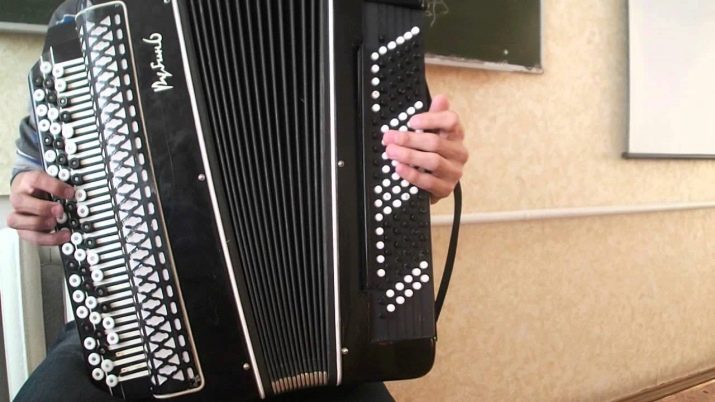What are accordions and how to tune them?
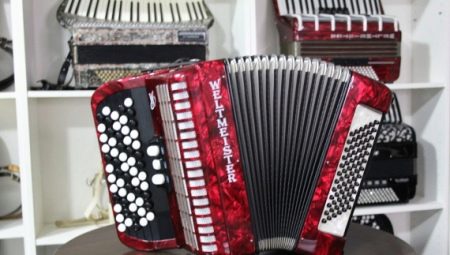
The violin sounds shrill, instantly drawing the listener along. The piano sounds noble and surprises with the unexpected character change. The trumpet produces a brilliant sound that is thrilling and demanding. Well, the button accordion is a polyphonic instrument, capable of repeating the sound of its "brothers", deftly imitating them and therefore be interesting for both the listener and the musician.
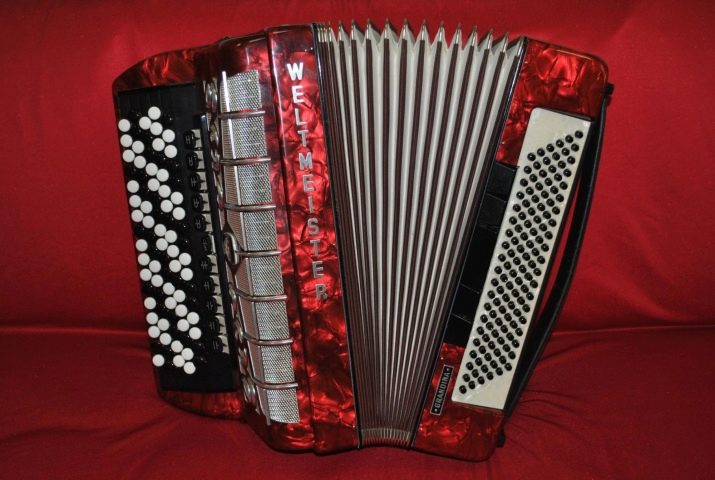
What it is?
An instrument with this name exists only in Russia and some neighboring countries. All over the world it is called a button accordion and rightfully so. The button accordion and accordion are not instruments from the same group, they are one and the same instrument with some difference in structure. But the principle of the game remains the same.
The definition of the button accordion sounds like this: it is a Russian traditional (but appeared a little over a century ago) instrument belonging to the chromatic type. It has been called a mini-organ more than once, since the similarity of the sound of the two products is obvious. The accordion has rows of round buttons on the right and a left keyboard.
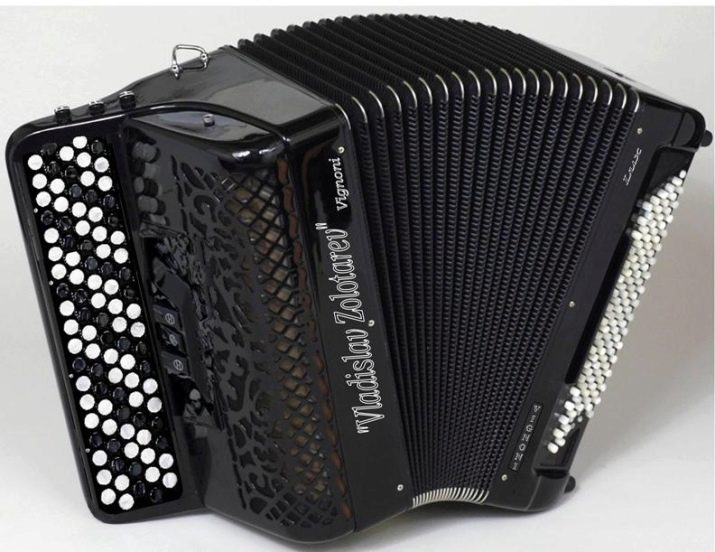
It belongs to the most advanced pneumatic keyboard instruments. He has a 12-step scale, shaped in an equal temperament key. The musical instrument is arranged as follows: its two sides are connected by fur - a chamber for air injection. Celluloid pads are attached to the surface, the fur chamber is pasted over with granite composition and special cardboard, reinforced with metal staples and chrome-plated corners.
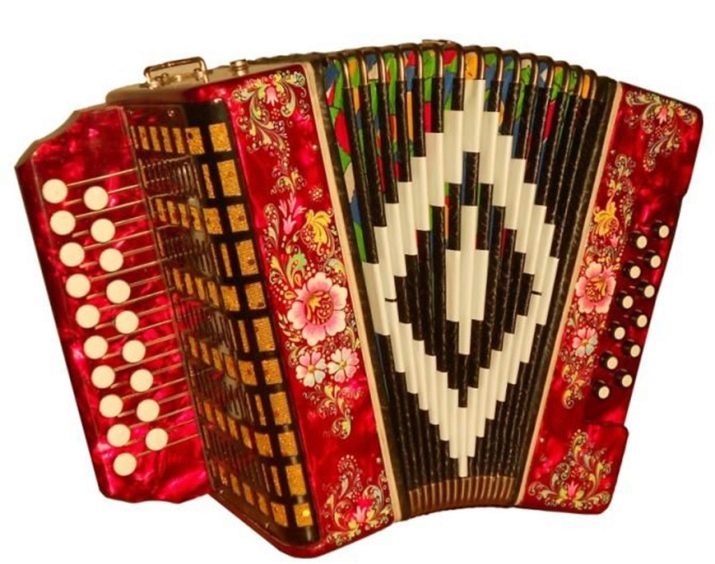
On the right side of the button accordion there are 51-61 keys. On the left side there are small buttons, the number of which can go up to 120. The device can be kept in weight thanks to the shoulder straps.The musician controls the movement of the fur during the game.
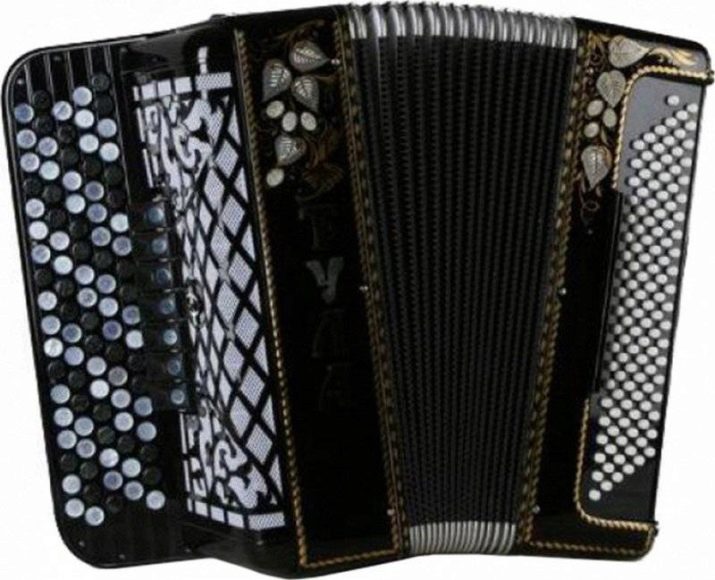
The sound is created by metal tongues (they are called voices). They are in tune. The slats are frames with metal tongues, and such a device is generally called a resonator. The volume determines the amplitude of the reed vibration.
The performer himself affects the volume and pressure on the fur: the stronger and more intense, the louder the game.
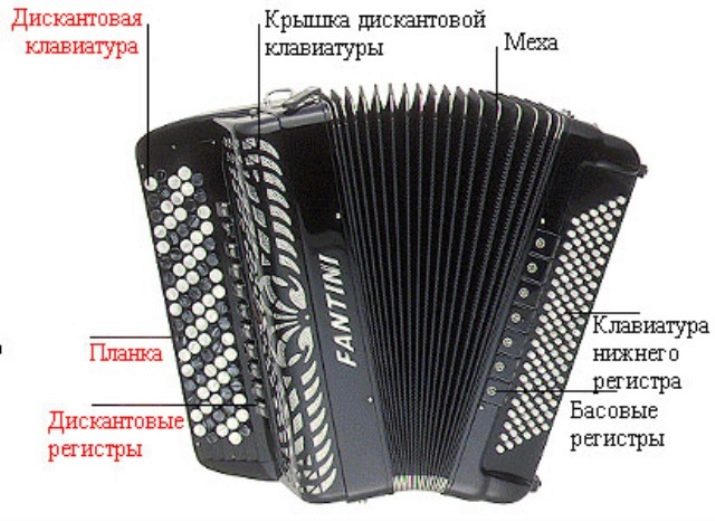
The range of this instrument is wide, the sound is rich, so it can solo. The timbre is colorful, the thinning is subtle, the sound is rich and melodic. The instrument allows you to play gentle romantic melodies, but it does not “refuse” a serious dramatic repertoire either.
It is played by women and men, in children's music schools it is considered one of the main instruments. Many people like, first of all, the aesthetic side - what the accordion player looks like during a performance. Some parents are confused by the cumbersomeness of the instrument, but a children's button accordion weighs less than an adult, which means there is nothing to worry about.
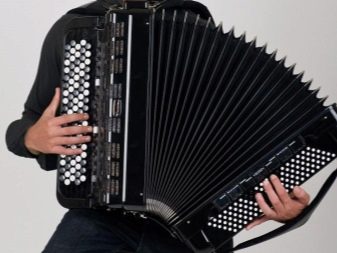
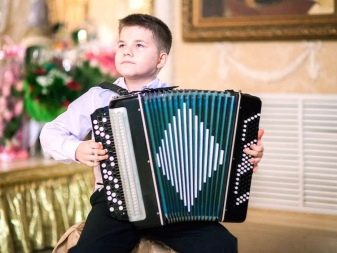
History of creation
Since the button accordion is actually an accordion, its origins are in the same place as the origins of the invention of the accordion. A they are associated with the names of talented masters - František Kirchner and Friedrich Buschmann. No, they did not work in pairs, each of them single-handedly invented an instrument that was as close as possible to the accordion (including in its push-button variation).
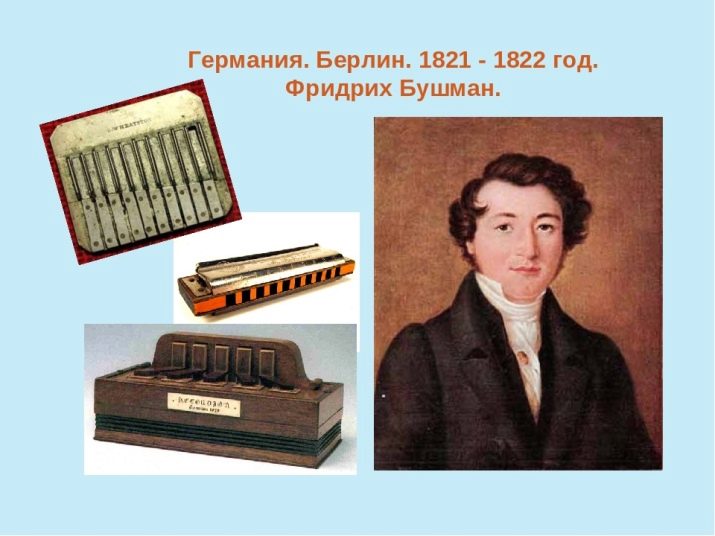
In 1787, Kirshner made a discovery - he proposed to release a musical instrument operating on the principle of oscillating a metal plate in a column of air. The air was blown in by a fur chamber. He not only suggested this, but also created the first examples of musical construction. Bushman also made a start in his invention from the oscillating tongue, only that one was part of the tuning fork, which the master invented for tuning the organ. And so, solving a completely different problem, the young inventor created a device with fur and weight, which predetermined the appearance of the accordion and, as a result, the button accordion.
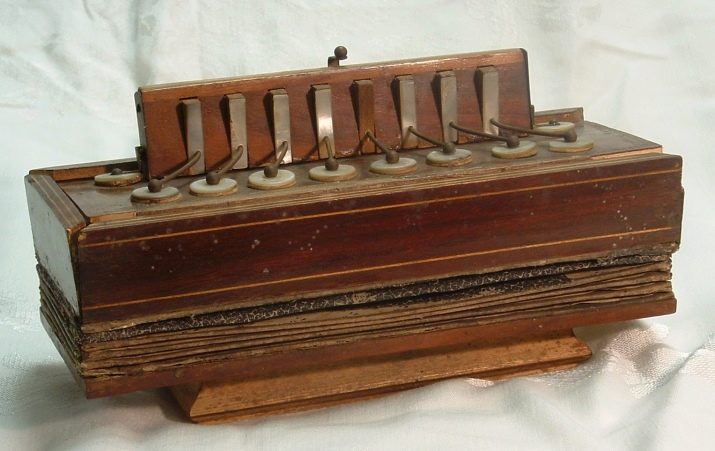
In 1829, Kirill Demian, an organ maker from Hungary, invented a musical construction with tongues and a fur chamber. He used the Bushman base, but modernized it. The instrument consisted of two parts - independent keyboards - and a fur belt in their connection. The right keyboard had seven keys, which was enough to play a melody. On the left is the bass. Demian patented an invention called the accordion. The instrument began to be mass-produced, and soon it ended up in Russia.
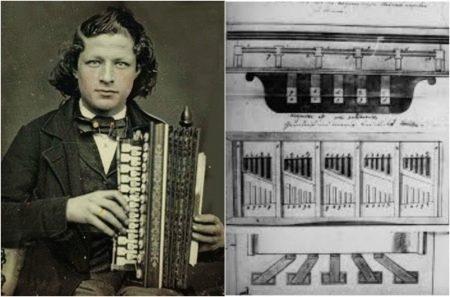
In 1830, Ivan Sizov, a gunsmith from the Tula province, bought an harmonica exotic for that time at the fair. At home, he took it apart, the device turned out to be simple. Looking at the acquisition, the craftsman was able to create his own instrument, which became known as the accordion. And soon in the city the accordion began to be produced at the factory. The process was launched: the masters competed with each other to produce the perfect accordion. But Tula is still considered a quality mark. So accordions are also the predecessors of the button accordion.
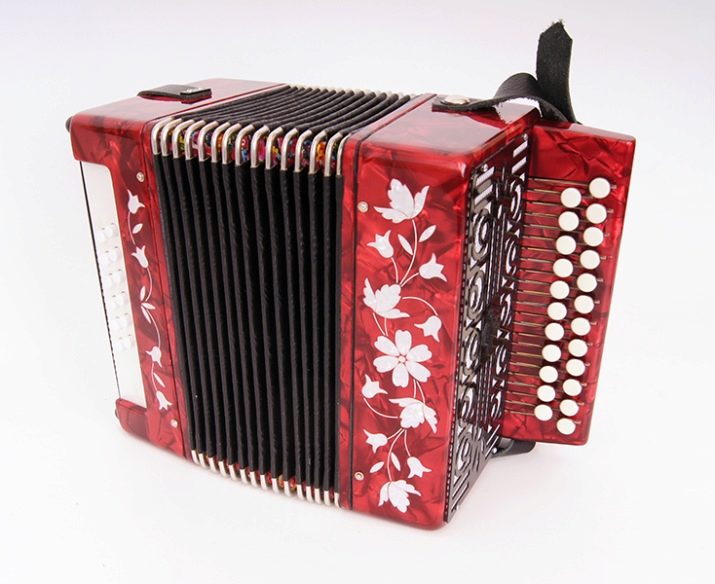
The harmony is tuned diatonic, can only be played in major or minor. To arrange a musical wedding, folk festivities, to play something gentle on the bunk, such an instrument is enough. The harmony was the people's favorite, it had a simple structure, therefore ordinary people could master it, even without a musical education.
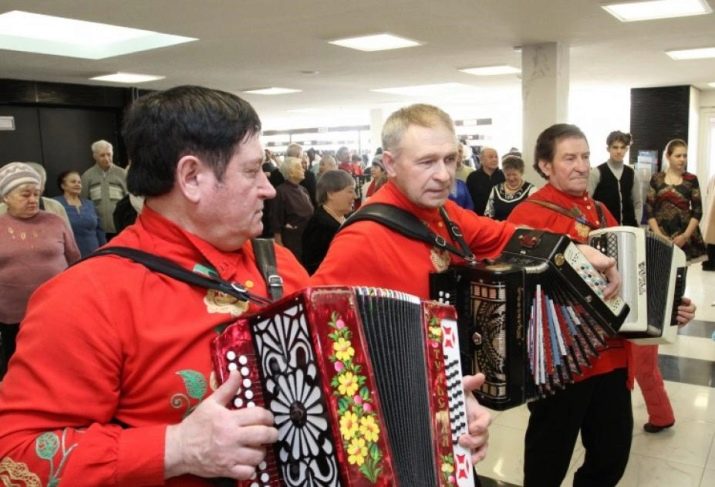
In 1907, Peter Sterligov from Petersburg made his accordion, and it already had a chromatic scale. This is how the button accordion appeared. And its name is a tribute to the memory of Boyan, an ancient Russian storyteller. The origin of the button accordion in its usual form refers precisely to the beginning of the 20th century. The instrument is gaining popularity, people love it.
From ditties and folk songs to serious classics - the button accordion goes this way confidently, giving birth to virtuoso accordionists and confidently becoming one of the most popular and beloved instruments in Russia.
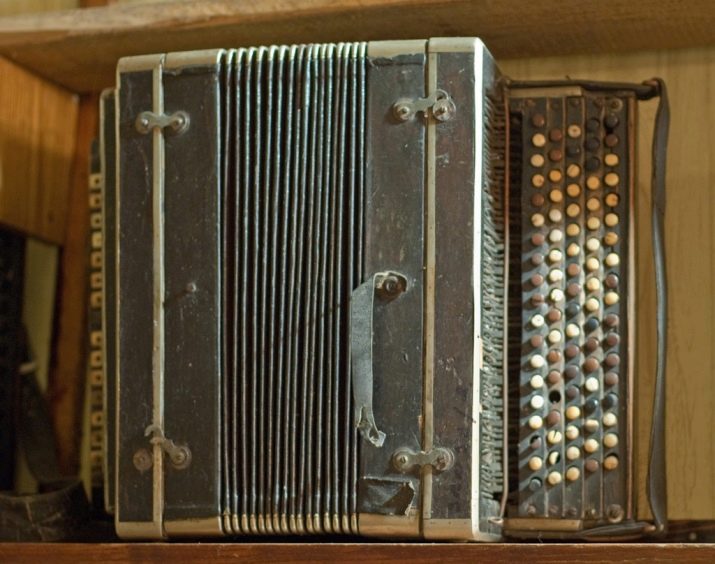
Species overview
The accordion sounding, if not replacing the whole orchestra, speaks in many of its voices. And the instruments are different - a large button accordion and a small, three-row, four-row, five-row, six-row.
Pupil and orchestral
For amateur accordionists, as well as for those who are just mastering the instrument, simple button accordions are selected. They differ in the number of buttons on both keyboards. The task of the student accordion is to learn, master the game, get to know the possibilities, and nothing more.
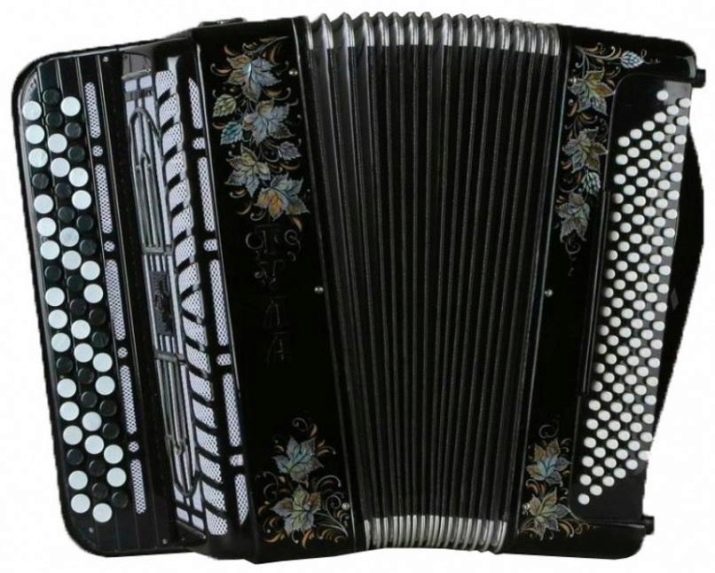
The simplest representatives of this category are semi-bayans. The number of octaves in them is minimal (on the right keyboard), as is the number of rows with ready-made chords on the left. The weight and dimensions of such models are predictably reduced.
Ensembles / orchestras usually use the instrument's right keyboard. Orchestral models are single-part and two-part, depending on the number of reeds sounding.
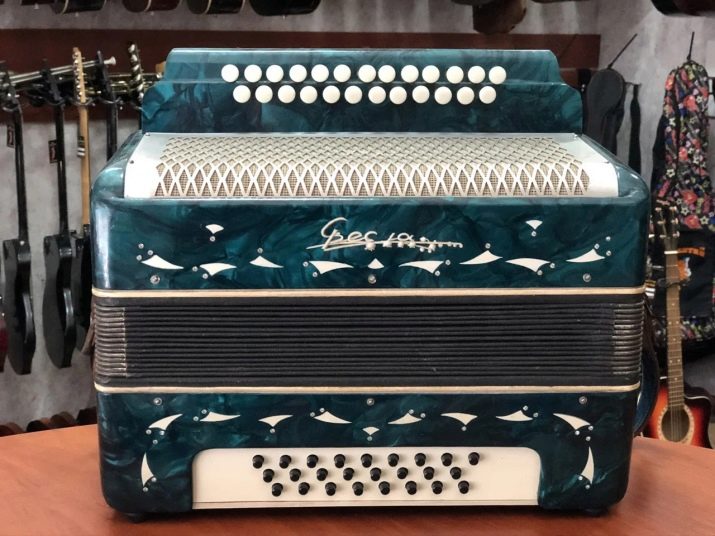
Live versions often use ready-to-play models. They differ from the usual ones in that the left keyboard in them is able to switch to the voice right side mode and work exactly as it does. This allows you to play two solo parts of a piece at the same time. Of course, such "tricks" can only be performed by a professional.
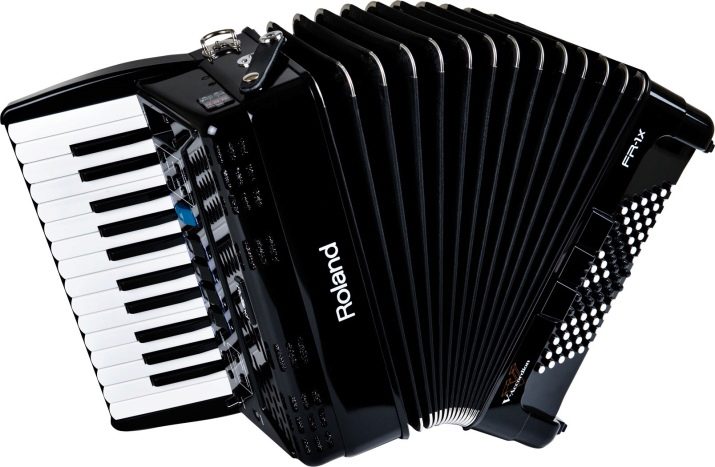
With an inverted keyboard
Everything is simple here: the left and right sides of the musical instrument are reversed. This is not the most common option, many might never have met such a button accordion. But there are musicians who prefer inverted designs. And it's not necessarily left-handed.
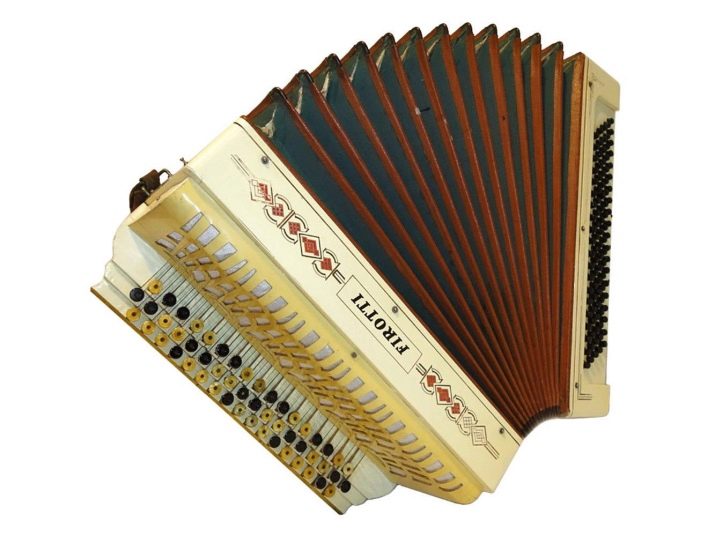
Timbre
The main "trump card" of these button accordions is that they are able to imitate the sound of individual wind instruments. So, if the accordion repeats the voice of the voltorna, it will be called so - "accordion-voltorna". And there are also button accordion-oboe and button accordion-trumpet. This is a great find for a small orchestra, which, thanks to such a simulator, can perform complex pieces. The repertoire of a full-fledged symphony orchestra becomes a real goal for such groups precisely due to the imitators of wind instruments.
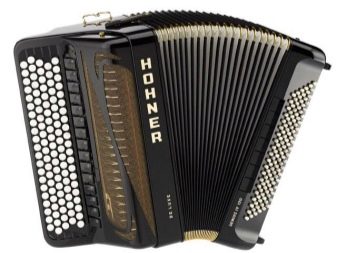
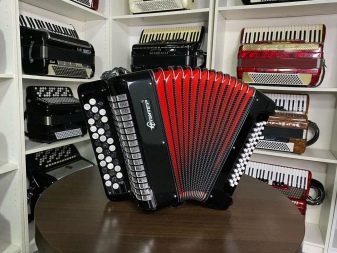
Yet again, There is also such a moment: most of the outstanding orchestral works are written for violin, piano and other instruments, leading in the general polyphony. The accordion parts are written in few places, and the instrument turns out to be unjustly unclaimed. So he has to become an imitator of wind instruments, but this is still a sound, and what a sound.
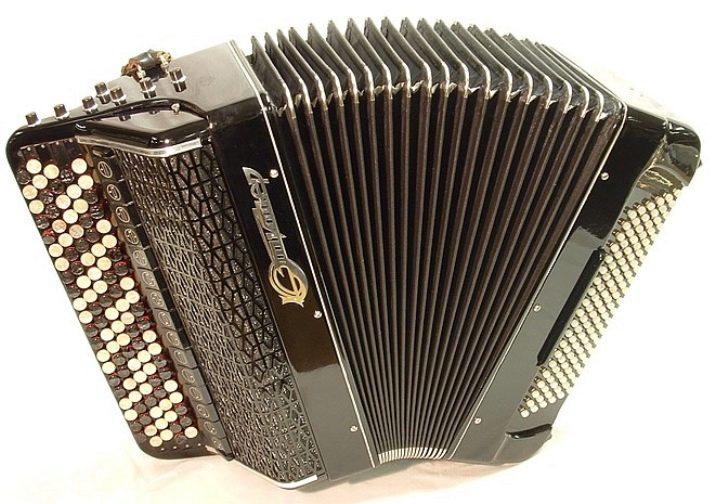
Digital
Digital instruments are a familiar attribute of our time. But if everyone has long been accustomed to the same synthesizers, the digital button accordion for many remains some kind of suspicious object. Despite the fact that contests for accordion players using this particular instrument are already being held in full swing. And many should take a closer look at it: for example, an ordinary professional button accordion with five rows will weigh at least 13 kg. And then that's all 18. If you practice on it every day, back problems can be confidently predicted.
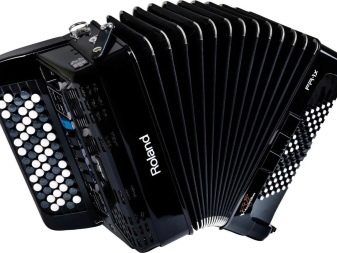
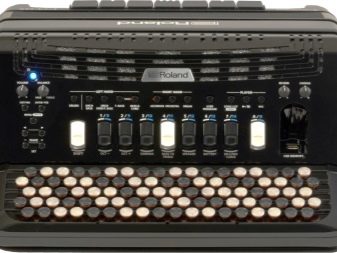
In contrast to this, the digital button accordion for professionals weighs 8 kg, the limit values are 11 kg. And it's a real pleasure to play it while standing. The artist does not feel tension, looks more expressive, holds on more easily. Is this not an advantage, but it is not an isolated one. Mechanical science on a digital instrument is also simplified. The musicians will confirm that many careers did not take place due to the fact that the talented performer could in no way equalize the skill in running the fur, and everything else was flawless.
The digital device has a fur adjustment sensor, and this is an option, that is, the performer may or may not choose it.
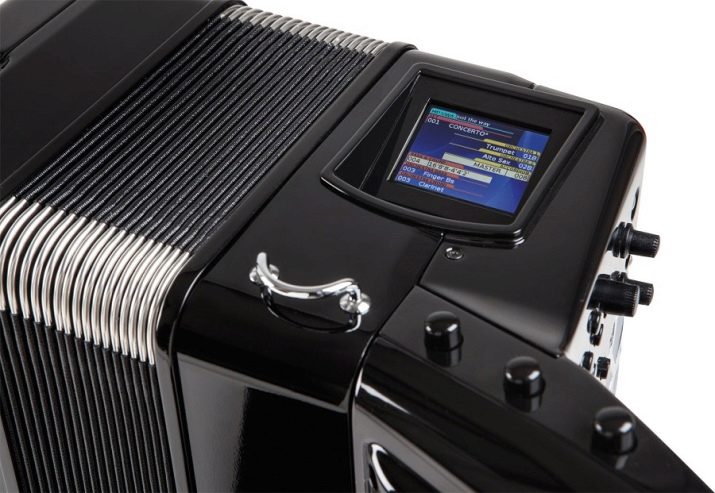
Finally, this instrument is ready-to-use, which expands the capabilities of the button accordion in the classical repertoire. If the accordion player is also an arranger (albeit at least in his heart), he will certainly appreciate such an instrumental potential. And the built-in drum kits in the digital device are impressive. Of course, this type of button accordion is expensive.But after all, it is intended for professionals, as well as for those who are serious about musical success.
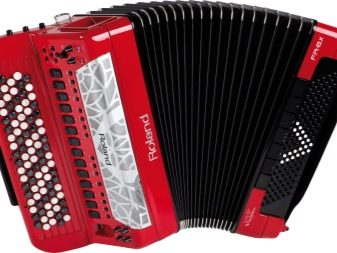
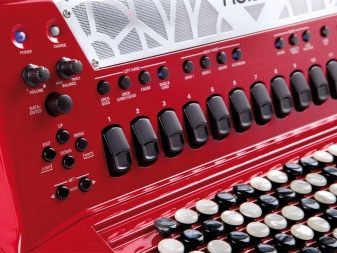
To get acquainted with the instrument, to understand the scale, registers, chords, a student button accordion is enough. But those who go further, master different types of instrument - they will learn what an all-bar button accordion, accordion, bass-button accordion is.
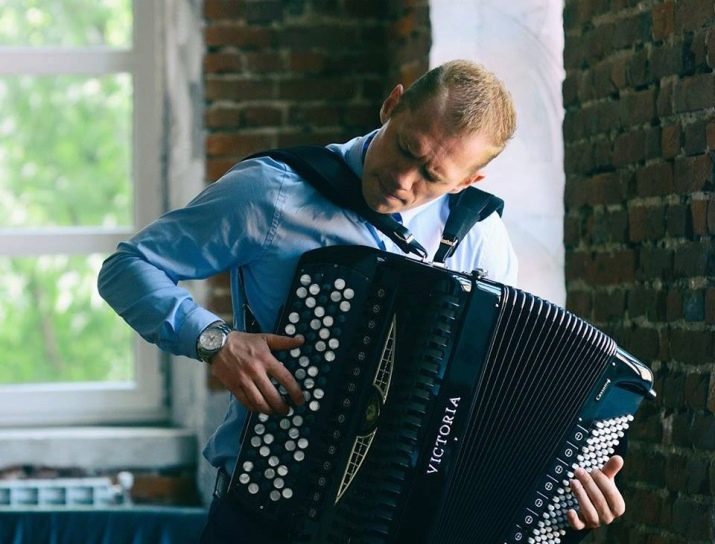
Popular models
The rating alone is not enough to describe all the worthy purchases of the model. The rating depends on whether the buyer is looking for an expensive instrument, whether he is focused on domestic production or wants an Italian or German instrument, period.
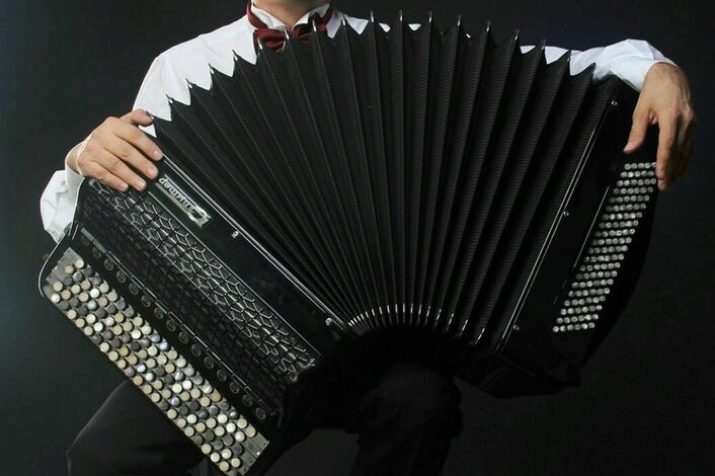
But almost every list of market leaders includes the following models.
- Weltmeister Romance 703 70/96 / III / 5/3. This push-button tool is available in several colors. The German quality of the eminent brand is beyond doubt, it is impeccable in sound, has a delicate setting, and is extremely popular among professionals.
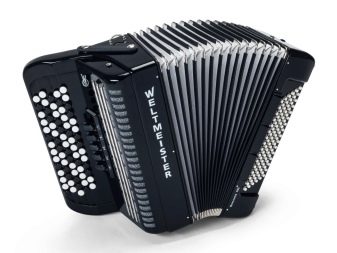
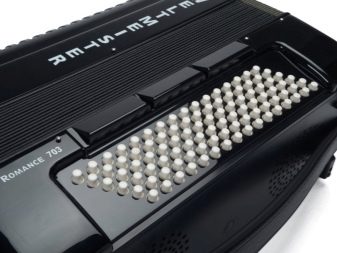
- Hohner Nova II 80 A. A brand with more than a century and a half history. It is recommended for teaching children of the secondary department of musical institutions. The instrument sounds great, the structure of the keyboard rows is optimal, there is a register on the outside of the neck so that you can quickly switch with the palm of your right hand.
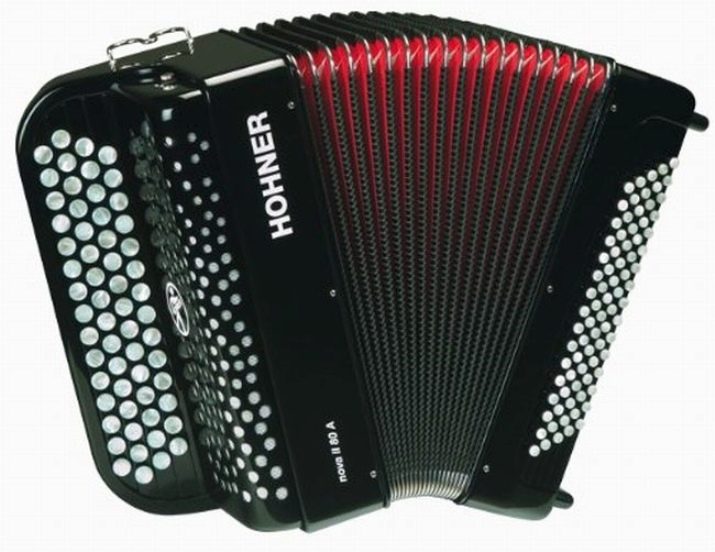
- Jupiter Lux (Barinov's factory). Six-row right keyboard, 8 chins, mute and key lock, many registers. True, they note that the new instrument may have "garbage" on the voices, but it is easy to remove it.
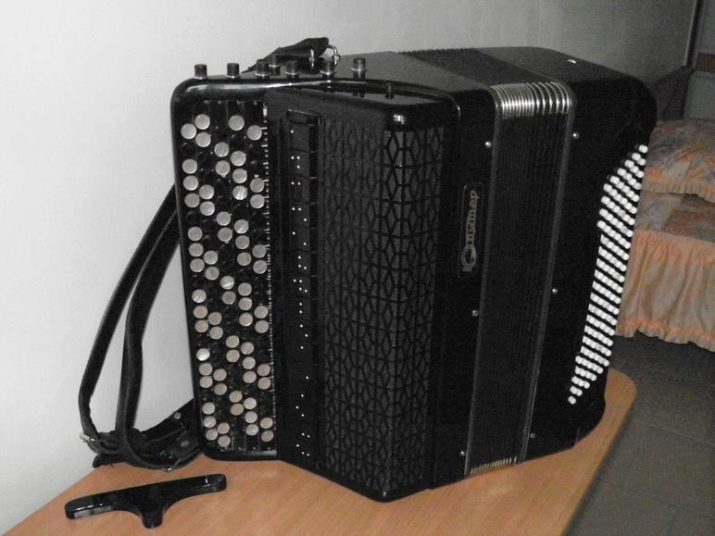
- "Tula" 209 92/55 * 100-II. A two-part bayan from the most famous domestic brand has a five-row right block, ready-made accompaniment of the left keyboard. It is assembled by hand, lightweight. It is also distinguished by deep, even juicy bass, but the right keyboards sound more than expressive. The buttons are made of plastic, no knocking is transmitted when pressed.
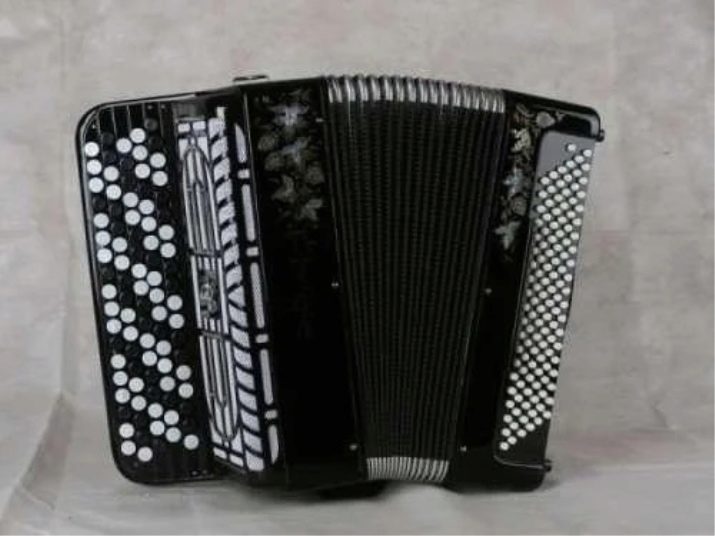
- Aurus GH5060H. The Chinese manufacturer offers an instrument with 37 notes, a ready-made keyboard and the ability to choose a button accordion in different colors. Refers to the budget segment.
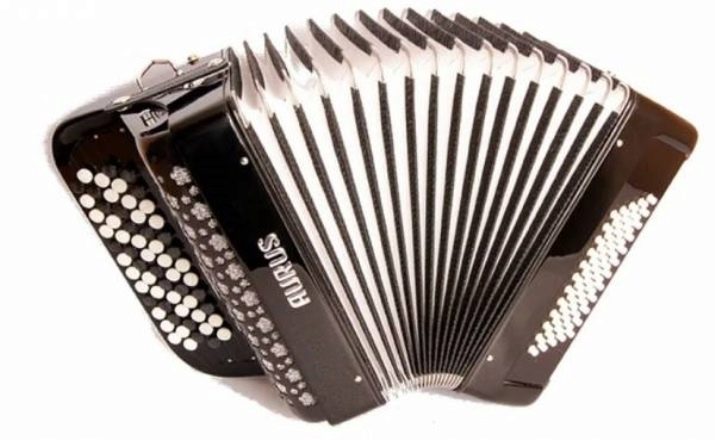
This list includes both inexpensive tools and those that cannot be called cheap for sure. But all of these brands are well-known and offer other interesting music products of different prices and possibilities.
If you want to find something very interesting, even exclusive, then the brands Mengascini, Ballone Burini, Brandoni from Italy meet these requests.
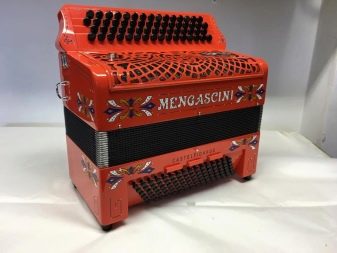
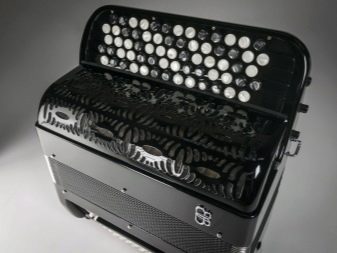
Accessories and components
These are primarily covers, cases and belts. The most popular accessories belong to them. There is no doubt that the instrument must be stored strictly in a hard case. But the inside of the case must be upholstered with a soft cloth. But it is much more convenient to carry it in a not so heavy case, which is usually called soft. Two shoulder straps can be sewn to the soft case, and then the accordion can be easily carried like a backpack.
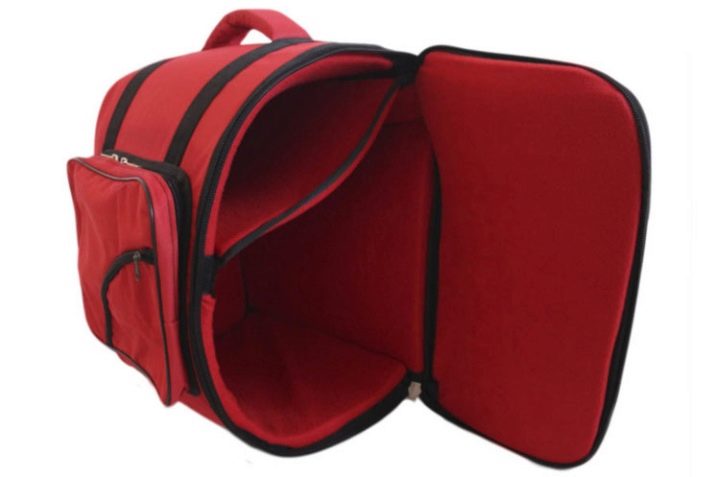
Repair may require replacement of components, and these can also be purchased. But sometimes new fur is so expensive that it will be an unreasonable waste for an old tool. Or one of the keyboards will not be cheap. In this case, the question arises of the commensurability of the repair and the value of the tool.
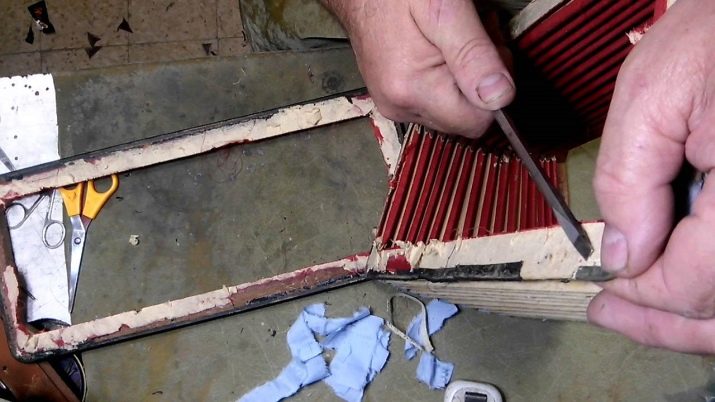
Criterias of choice
If the instrument is new, it is necessary to rely primarily on the price and objectives of the button accordion. But very often the button accordion is purchased "from hands", and the choice is hampered by the insufficient competence of the buyer.
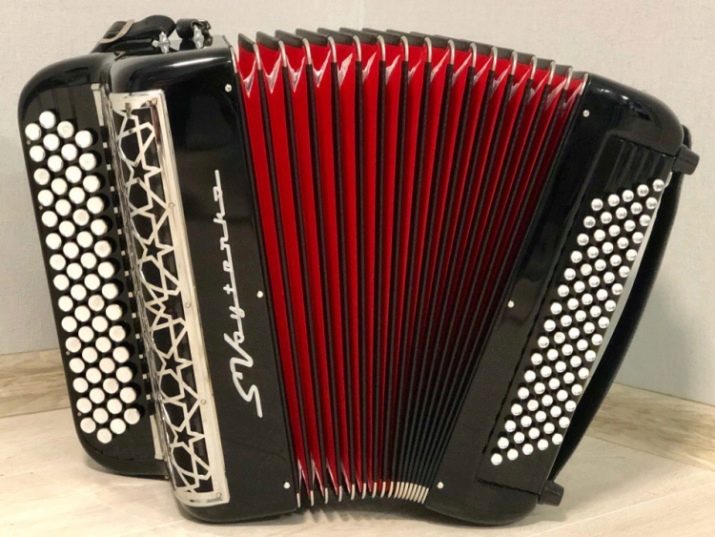
How to choose a button accordion, used, and not miscalculate.
- Appearance. You should not find fault with him too much if there are slight abrasions, scratches and other traces of use. If the instrument sounds optimally at the same time, such roughness does not matter. Well, except that you can get a small discount.
- If the tool has significant cracks or dents, it is most likely falling. And such a "trauma" of the instrument can not only affect it externally, but also result in a loss of compression, a break, cracks in the resonator pads, and so on.
- If the fur ribs are broken or severely bent, this also indicates a fall or strong impact from the tool. And repairs may not help the fur to regain its former elasticity.
- With a strong smell of dampness that comes from the button accordion, it is easy to guess that they kept the instrument for a long time in a damp and unheated room. The smell, by the way, is not easy to erase. But it is also dangerous because with such "symptoms" a corrosive process of metal voices will be discovered along the way, that is, problems with the system are very likely.
- If the number of broken keys cannot be called small, the buttons are broken and there are holes in the fur, everything is clear and without the advice of the pros. Even if they give a button accordion for a penny, a major overhaul will cost an impressive amount, if at all someone will undertake to collect it.
- It is imperative to check the tightness of the tool. It should not allow air to pass through without pressing the keys when compressing and unclamping. The more noticeably the fur "floats", the more air leaks out, the game cannot be truly comfortable in this case.
- Even if there is no visible damage, the button accordion literally shines and seems no worse than the new one, without appreciating its sound, one should not delude oneself. If its sound is faded and ugly, the value of such an instrument instantly drops. If he's too upset, too.
- In a good instrument: the voices sound clear (no corrosion is felt), the wax compounds around the voices are intact, the resonator boxes are in close contact with the bayan deck, and the register switching mechanism works flawlessly.
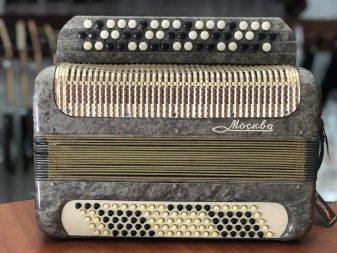
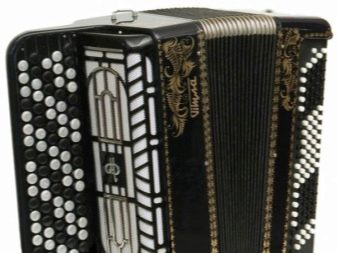
A responsible seller will not sell an out of tune button accordion. In this form, it cannot be presented for purchase, it is difficult to say something about its capabilities. And this is normal when the seller first invites a customizer (if he does not own the customization himself) and evaluates the instrument for sale only after the customization. Otherwise, you can buy a "pig in a poke".
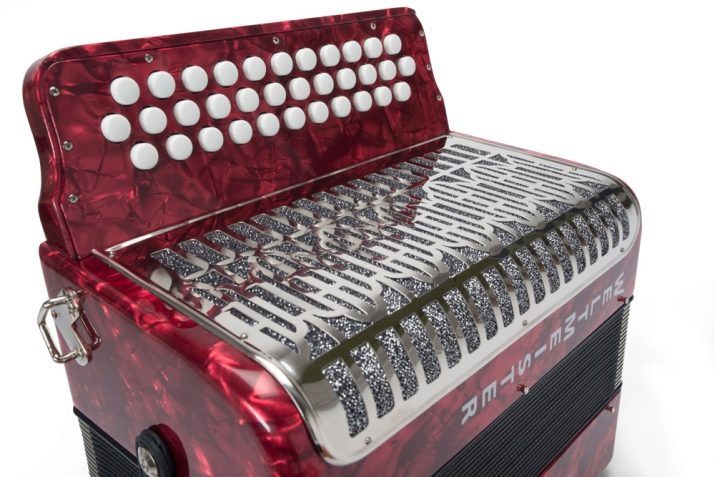
Customization
The fact is that not everyone can customize this tool. And an inexperienced owner, and even at home, exaggerates his capabilities: even with a professional tuner (the program can be downloaded on the Internet) it is difficult to do this.
The accordion simply does not physically have such tuning components as the same piano or guitar. Inside the button accordion there are inserts with reeds, they, reeds, may not fit very tightly, go to the side, which affects the sound errors. Still, this is about instrument repair rather than tuning.
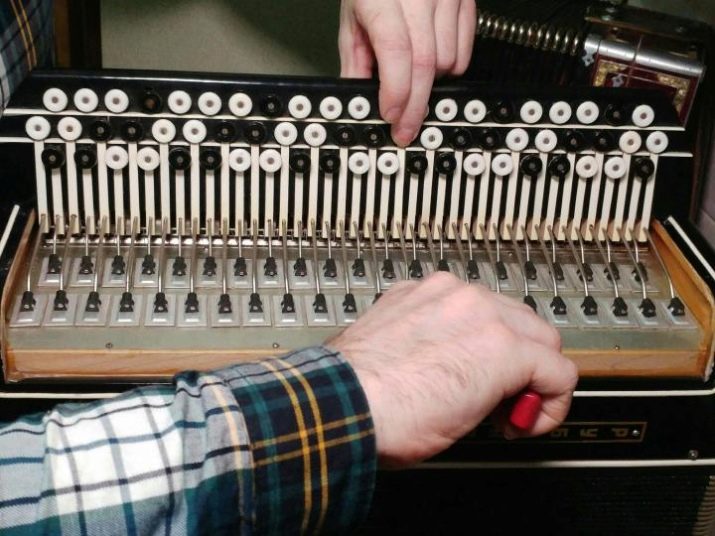
Initially, the reeds in the accordion are ideally adjusted, that is, the instrument is tuned a priori. As it is bought, so it will sound. Needless to say, one shouldn't expect a bright and rich sound from a cheap button accordion. Therefore, you can talk about tuning, but only if it is conducted by a professional with perfect pitch.
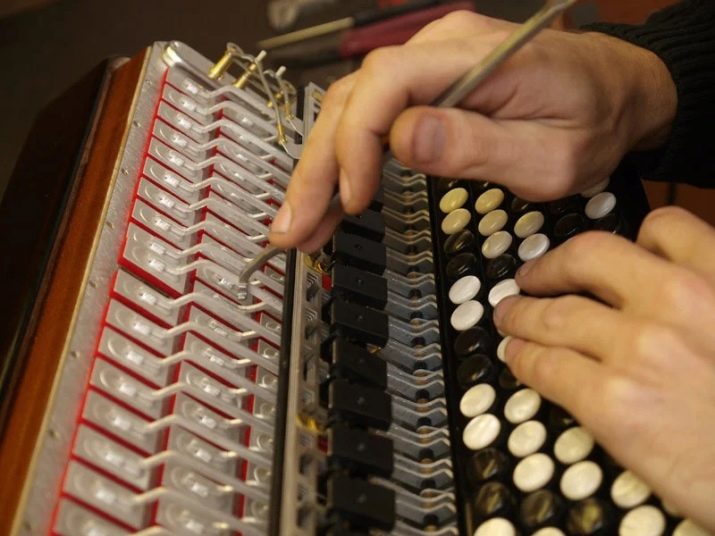
How do you learn to play?
A self-study book, music stand, chair, button accordion - this is enough for even an adult to learn to play the instrument. You can also go in a more advanced way: there are many programs for teaching musical notation, as well as playing specific musical instruments on the Internet.
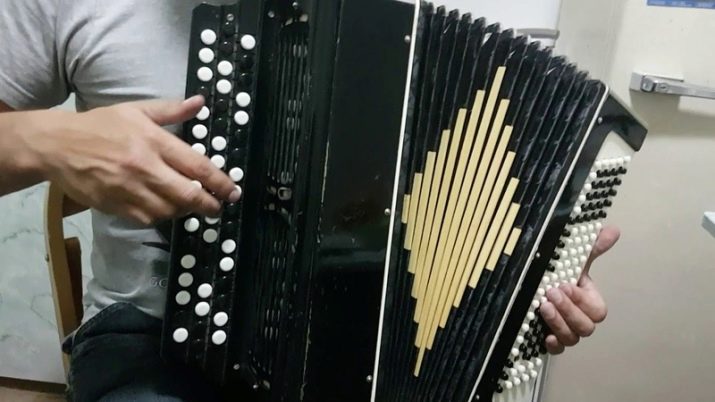
Highlights of training.
- It must be held correctly. Grab the neck with your right hand so that your thumb is behind the neck, and everyone else can freely move around the keys. The left hand is also four active fingers.
- The left keyboard is bass and chords. Just press one button to play a whole chord. On the right are the keys of the four main octaves, major and minor.
- Keeping the fur right is also a science. You need to press any key on the right keyboard and start stretching the tool with your left hand. The fur moves, the sound grows, and when stretched out, it dies down.
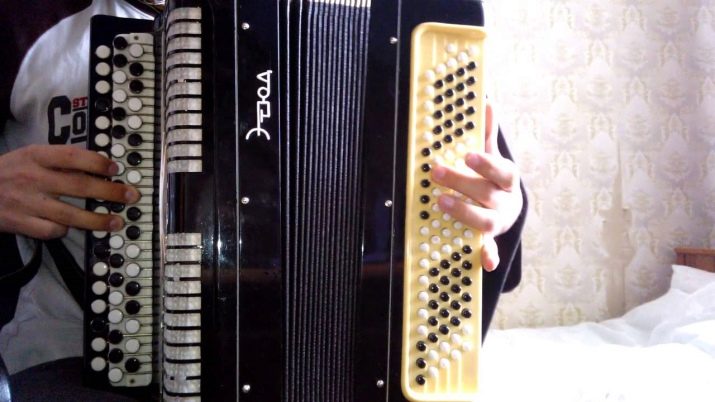
Finding a self-instruction manual for playing the accordion without notes is not a problem, for adult students this is a good help, the fear of not knowing musical notation goes away. There the fingering (arrangement and alternation) of the fingers is written there when playing.Fingering is also called the pointing of the fingers in the notes by numbers. This makes learning much easier.
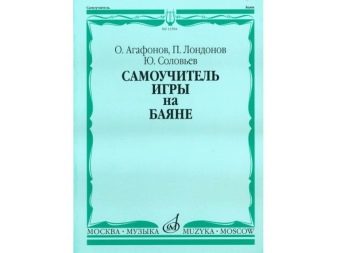
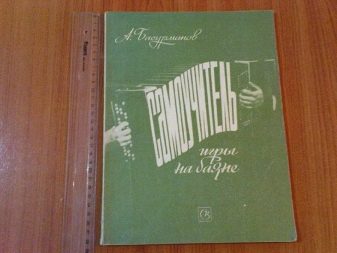
Finally, the advantage of the last decades in self-study of the game - video tutorials. They help beginners learn the instrument remotely and do it as regularly as the performer himself wants.
